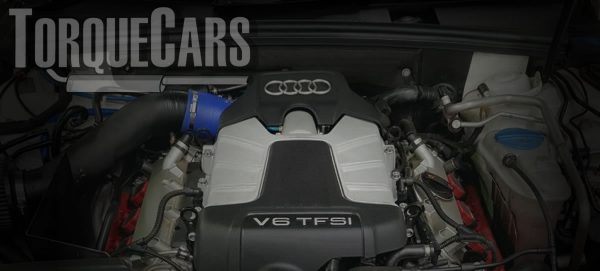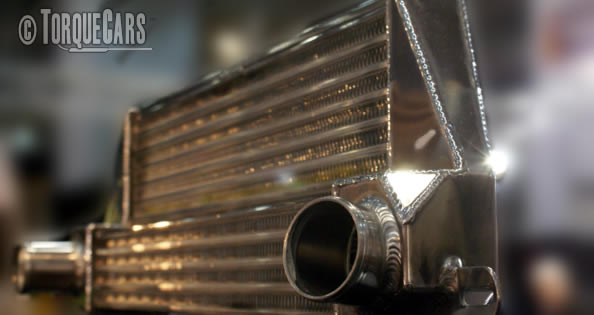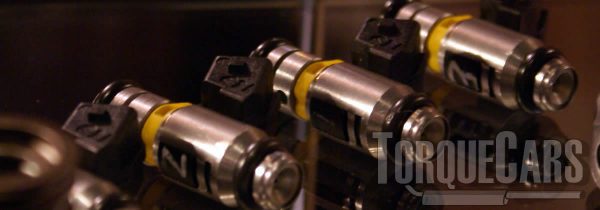Guide to tuning the 3.0 V6 24v TFSI (EA837) engine
"Thank you for reading our EA837 tuning guide."
Current engine codes for the 3.0 V6 24v TFSI EA837 included CAJA, CAKA, CCBA, CMUA
The engine shuns a turbo, instead utilizing an Eaton 'Twin Vortices Series' supercharger and 24 valves plus Fuel Stratified injection making it feel like a very Torque rich V8.
The third-generation 3.0l V6 TFSI engine was an interesting development because it was the first Audi V6 engine to feature direct injection and supercharging.
It was revised with the goal of significantly improving fuel economy while maintaining all of the previous engine's favorable features. A method for the mechanical charging system that enables "on-demand supercharging" by the addition of a magnetic clutch
Instead of the popular BOSCH units, a Siemens Simos 8 series ECU controls everything keeping it running efficiently.
For a clean burn, the spark plugs were mounted centrally, allowing the FSI injection system to deliver maximum power.
History, Power & Specs of the 3.0 V6 24v TFSI EA837 Engine

- 268 bhp at 4,780–6,500 rpm 295 lbft at 2,150–4,780 rpm
CMUA
Audi A4, Audi A5, Audi Q5 - 286 bhp at 4,850–6,500 rpm 310 lbft at 2,500–4,800 rpm
CAJA
Audi A6 (C6) - 329 bhp at 5,500–7,000 rpm 325 lbft at 2,500–5,000 rpm
CAKA/CCBA
Audi S4 (B8), Audi S5 - 349 bhp at 6,000–6,500 rpm 347 lbft at 4,000–4,500 rpm
CTXA
Audi SQ5 (8R) VW Touareg Hybrid
Best EA837 tuning mods
The ultimate tuning parts on an engine are in our opinion the ones that give the best power gain for your spend.
We won't be swayed by popular EA837 tuning parts, they need to be cost effective.
The following monster setup achieved an astonishing 700Nm of Torque. Although this was not achieved on pump fuel.
- AWE Supercharger Pulley (57.55mm)
- Kustom Imports LW Crank Pulley v2 (200mm)
- Tampa Autosports Ported & Polished Blower
- Tampa Autosport 4" Intake
- AWE Coldfront Kit with hygroscopic vents
- PLM Coolant Reservoir with VariMax booster pump
- Test pipes + Milltek non-resonated exhaust
- Porsche 997 Throttle Body with iAbed TB Adapter
- AEM Stage II Meth Kit with Snow Solenoid
- Autotech HPFP
- RS7 Hybrid LPFP
- Mishimoto Trans Cooler with Overflow Tank
- SAI Delete
- Bosch FR5DTC Plugs (Bosch Coils)
- Intercoolers v1
- Flex Fuel LPFP + Walbro 450 lift pump
The ECU map and fuelling also have a large bearing on the bhp gains you'll hit.

Extending exhaust or intake durations can alter the bhp band and on most engines, the exhaust and intake durations do not need to match, although most cams and tuners use matched pairs there are some advantages to extending the intake or exhaust durations.
Please watch our video which covers the 5 principles of tuning your car. Be sure to keep up with our latest YouTube content and subscribe.
Best Engine Mods for your Car
- Engine Tunes - engine tuning/remapping provides the most advantage in terms of cost savings, aftermarket ECUs, and piggyback ECUs are all alternatives.
- Supercharger Pulleys - by changing the rotational speed of the supercharger relative to the crank you can add power. It effectively increases the amount of air being pushed into the engine.
- Intake and Exhaust - Note that on their own these mods will NOT ADD POWER in most cases, but they can help enhance power after other mods by removing the restriction.
- Upgrades to turbochargers and superchargers - forced induction is the most efficient approach to increase air supply, allowing you to burn more fuel and make more power. It is one of the most costly upgrades but provides the best gains.
- Intercooler upgrades - any engine using forced induction will benefit from a better intercooler of an appropriate size and flow rate.
- Head work - The goals of porting and flowing the head are to get air flowing into the engine while removing flow restrictions and turbulence.
So we will break these usual recommendations down and see if these 'best mods' are appropriate for your car and we shall look in detail at the mods that will work for you and your needs.
Typical stage 1 mods often include: Intake manifolds, Panel air filters, Sports exhaust header/manifold, drilled & smoothed airbox, Remapped ECU, Improved intercooler.
Typical stage 2 mods often include: Sports catalyst & performance exhaust, Fast road cam, Ported and polished head, fuel pump upgrades, induction kit, high flow fuel injectors.
Typical stage 3 mods often include: Engine balancing & blueprinting, Adding or Upgrading forced induction (turbo/supercharger), Competition cam, Crank and Piston upgrades to alter compression, Twin charging conversions, Internal engine upgrades (head flowing porting/bigger valves).
3.0 V6 24v TFSI remapping
ECU flashing helps fully realize the full potential of all the mods you've fitted to your EA837.
It will usually give you around 20-30% more power on supercharged vehicles, but your mileage will vary depending on the mods you've done and the condition of your engine.
3.0 V6 24v TFSI Intake improvements
Getting air and fuel into each cylinder is the aim of any car tuning task and the 3.0 V6 24v TFSI is no exception.
Large capacity V6 engines like the EA837 do not require much modification to the intakes as they flow pretty well from the factory, the relatively low RPM range means that there is little extra work for the intake to do but when heavily tuned/remapped with extra mods you might start to see a restriction.
Intake manifolds flow the air during the suck phase from the filter and allow it to be drawn into the engine cylinders.
The size of bore and shape and rate of flow of the Intake manifolds can make a big effect on fuel delivery on the EA837.
Most manifolds are ripe for aftermarket parts, although some manufacturers provide reasonably well-designed headers.
Larger EA837 valves, doing some port work and head flowing will also improve bhp and torque, the fantastic side effect is it will raise the potential for raising the bhp and torque increase on other upgrades.
3.0 V6 24v EA837 TFSI Turbo upgrades

The more air to get into an engine, the more fuel it can burn, and uprating the induction with a turbocharger upgrade makes massive power gains.
When a car has forced induction mods are simpler to install and you will discover supercharged engines already contain many forged and stronger components.
However you will find engines have weak spots thankfully the EA827 is pretty solid and well constructed, supercharger upgrades usually make the best power gains for your money.
We see many guys spending loads on t supercharger upgrades on the EA837 only to suffer the humiliation of seeing the engine block go up in smoke just after it's completed because they omitted to get it properly mapped, or didn't check the power limits for their power target on the stock internals.
Overdrive supercharger pulleys
A simple overdrive pulley on the supercharger or larger capacity supercharger can give impressive power gains. The use of overdrive pulleys is a great way to get the superchargers to spool up more quickly and it makes for a fairly simple power upgrade. It just changes the gearing and causes the supercharger to spin faster than it was originally set up to do.
Turbo Conversions
Some have gone the turbo route but a larger upgraded turbo will often suffer low-end lag, and low capacity turbos spool up quickly but don't have the peak rpm torque gains - both of which are negated by the use of the supercharger.
It is not unusual that there's a restriction in the airflow sensor (AFM/MAF/MAP) on these engines when loads more air is being drawn into the engine.
Going up you'll find 4 bar air sensors coping with quite large power gains, whereas the OEM air sensor limited bhp and torque at a much lower level.
Adding a supercharger or additional turbo will make large bhp gains, although more difficult to set up. We have a twincharger bhp adding guide if you want to read more.
EA837 3.0 V6 TFSI Intercooler upgrades
The relative closeness of the cold intake charge to the hot exhaust temperatures within the turbo is one issue with turbos.
Remember that a large portion of the heat rise in the intake air comes from the compression of the air, thus even supercharged engines will benefit from an intercooler.

If you've ever felt the nozzle on a tire pump, you'll know that as air is compressed, it heats up. We know from chemistry and physics that the colder the air, the more oxygen it contains.
The actual power boost from an effective intercooler design over OEM is normally around 5% to 10% with a drop in temperature of 35C-40C, and this will naturally rely on the operating temperature - the greater the difference between intake temp and ambient temp, the better the cooling impact.
Even massive, efficient intercoolers will eventually succumb to heat soak!
This is the point at which the intercooler begins to warm up, usually after extended durations of high boost driving. In general, the larger the intercooler, the longer it can withstand heat soak. So, if you want to get the most out of an intercooler, you need to get the right size.
3.0 V6 24v TFSI Fuelling
When you boost the bhp and torque you will need to ramp up to the fuel system.
More bhp and torque need more fuel. While stock injectors seem to have a lot of headroom, you'll discover that the OEM pumps are only capable of roughly 450 litres per hour due to their design, a bucket configuration.
Upgrading the pump or installing a secondary pump provides more headroom, and a decent top limit is roughly 700 litres per hour, which should be sufficient for the majority of modifications and improvements.
 It makes sense to be generous with your flow rate on the injectors.
It makes sense to be generous with your flow rate on the injectors.
Generally the TFSi's flow fuel well, but we've seen people adding port injection upgrades for a little more.
I haven't found any direct replacements for the TFSi injectors on the 3.0V6 so if you know of any let me know and I'll pop a mention up in here.
As a rule of thumb add 20% capacity when fitting an injector, this allows for injector deterioration and allows you some spare capacity should the engine require more fuel.
EA837 Exhaust
You may need to update your exhaust if the existing exhaust is creating a flow problem.
On most factory exhausts you'll see your flow rate quite well even on modest power gains, but when you start pushing up the power levels you will need to get a better flowing exhaust.
Sports exhausts can help increase the flow of air through the engine.
But if the exhaust pipe is too large, ie: over 2.5 to 3 inches bore, you will lose a lot of the exhaust flow rate and end up losing power and torque.
Typically exhaust restrictions come around the catalysts installed, so adding a higher flowing race alternative such as a sports catalyst pretty much removes this restriction, thanks to its larger size and surface area, and will effectively raise the performance to levels you would expect without having a catalyst installed, but keeps the car road legal.
Weak spots Issues & problem areas on the 3.0 V6 24v
The EA837 engines are generally reliable and solid units, as long as you follow the manufacturer's service schedules, and use a good quality oil to ensure longevity. Few problems should happen as long as they are regularly serviced and maintained.
Carbon build-up in the head, particularly around the valves which will sap power or create flat spots, this is a larger issue on direct injection engines but should be looked out for on all engines. We have tips on removing carbon build up.
Some of our members have had issues with flat spots or glitches after applying mods and upgrades or tuning, this is not usually related to this engine's design, so instead see our article on diagnosing flat spots and problems after tuning which should help you get the bottom of this issue.
Regular oil changes are vital on the EA837, especially when tuned, and will help extend the life and reliability of the engine.
If you would like to know more, or just get some friendly advice on Tuning your VAG engine please join us in our friendly forum where you can discuss EA837 tuning options in more detail with our EA837 owners. It would also be worth reading our unbiased VAG tuning articles to get a full grasp of the benefits and drawbacks of each modification.
Please help us improve these tips by sending us your feedback in the comments box below.
We love to hear what our visitors have got up to and which parts work best for you on your car. Which helps us keep our guides and tips up to date helping others with their modified car projects. Your feedback and comments are used to keep this page up to date and help improve the accuracy of these articles which are kept updated and constantly revised.
If you've enjoyed this page we would be very grateful if you could share a link to it on your favorite forums or your social media profiles, it helps us keep going.
Please Check out my YouTube channel, we're regularly adding new content...
PLEASE HELP: I NEED YOUR DONATIONS TO COVER THE COSTS OF RUNNING THIS SITE AND KEEP IT RUNNING. I do not charge you to access this website and it saves most TorqueCars readers $100's each year - but we are NON PROFIT and not even covering our costs. To keep us running PLEASE Donate here
If you liked this page please share it with your friends, drop a link to it in your favourite forum or use the bookmarking options to save it to your social media profile.
Feedback - What do You Think?
Please use our forums if you wish to ask a tuning question, and please note we do not sell parts or services, we are just an online magazine.
Help us improve, leave a suggestion or tip
Please watch this video and subscribe to my YouTube channel.
2 Responses to “3.0 V6 24v TFSI Tuning”

 Click to accept YouTube Cookies & Play.
Click to accept YouTube Cookies & Play.
Need Audi Q7 3.0 TFSI super charger 2012 need for stage 2 or 3 parts and support
My engine just started to have blue smoke puffing out of my tailpipe. This would be the best time to do modification and this website greatly helped me on what to do next. I’ll be joining the forum as well to find out more about my engine. I have a 2012 A6 Quattro 3.0TFSI and is a novice in tuning world. I bought the car with 187mm crank and OE supercharger pulley tuned with EPL. Looking forward to learn more with your guidance and expertise!